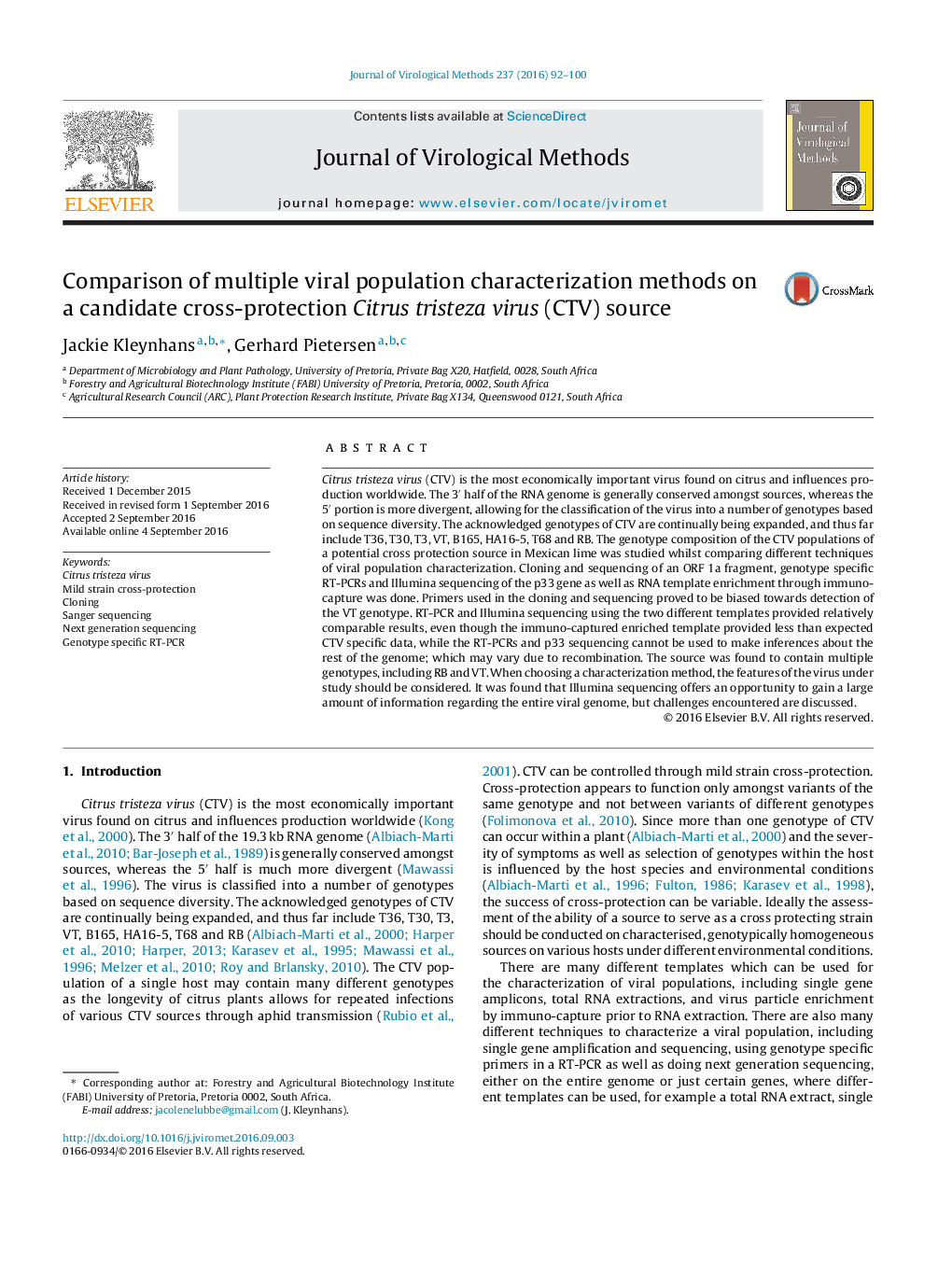| Article ID | Journal | Published Year | Pages | File Type |
|---|---|---|---|---|
| 6132668 | Journal of Virological Methods | 2016 | 9 Pages |
Abstract
Citrus tristeza virus (CTV) is the most economically important virus found on citrus and influences production worldwide. The 3â² half of the RNA genome is generally conserved amongst sources, whereas the 5â² portion is more divergent, allowing for the classification of the virus into a number of genotypes based on sequence diversity. The acknowledged genotypes of CTV are continually being expanded, and thus far include T36, T30, T3, VT, B165, HA16-5, T68 and RB. The genotype composition of the CTV populations of a potential cross protection source in Mexican lime was studied whilst comparing different techniques of viral population characterization. Cloning and sequencing of an ORF 1a fragment, genotype specific RT-PCRs and Illumina sequencing of the p33 gene as well as RNA template enrichment through immuno-capture was done. Primers used in the cloning and sequencing proved to be biased towards detection of the VT genotype. RT-PCR and Illumina sequencing using the two different templates provided relatively comparable results, even though the immuno-captured enriched template provided less than expected CTV specific data, while the RT-PCRs and p33 sequencing cannot be used to make inferences about the rest of the genome; which may vary due to recombination. The source was found to contain multiple genotypes, including RB and VT. When choosing a characterization method, the features of the virus under study should be considered. It was found that Illumina sequencing offers an opportunity to gain a large amount of information regarding the entire viral genome, but challenges encountered are discussed.
Related Topics
Life Sciences
Immunology and Microbiology
Virology
Authors
Jackie Kleynhans, Gerhard Pietersen,
